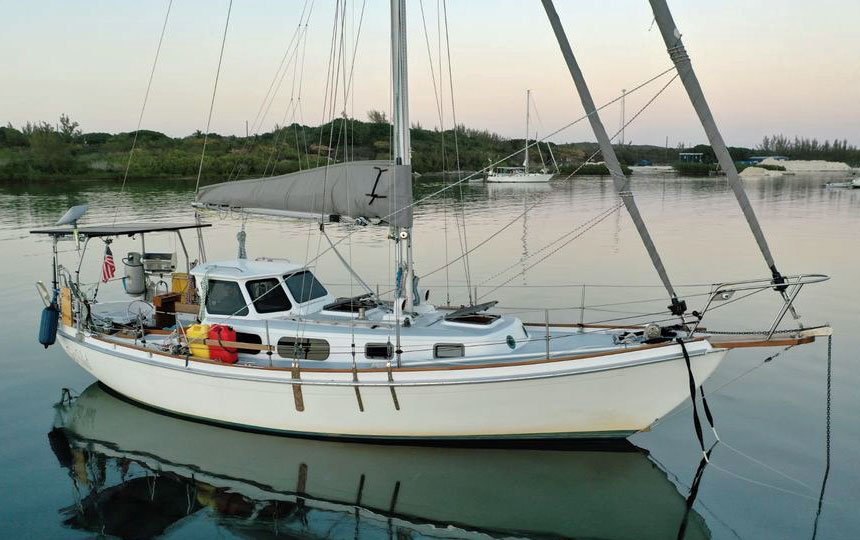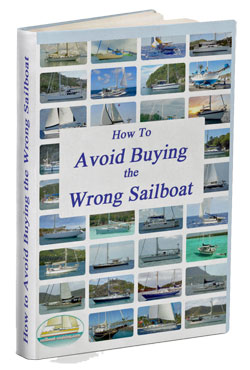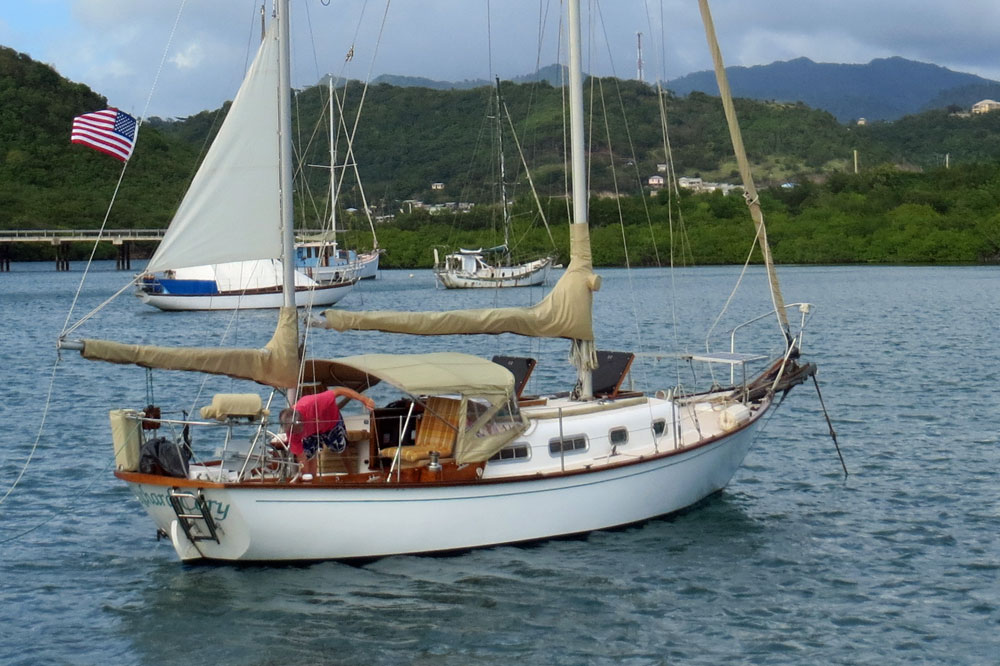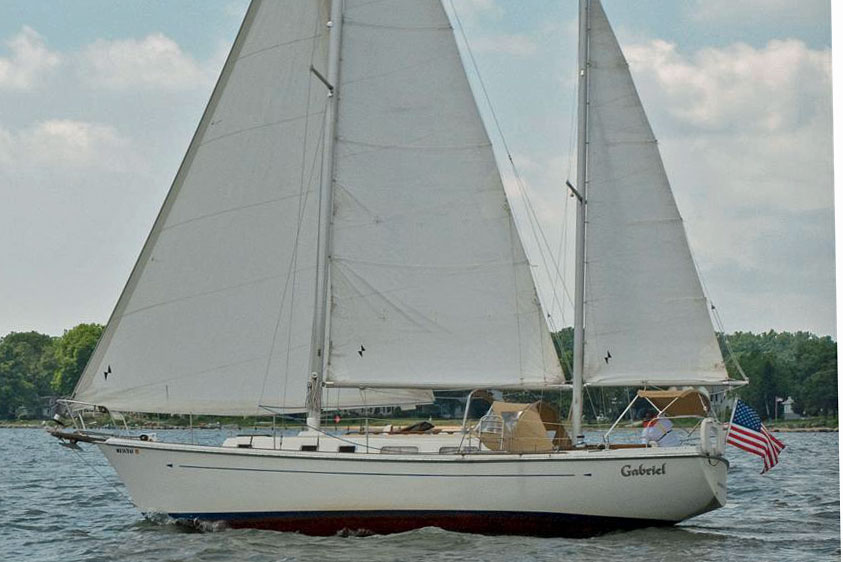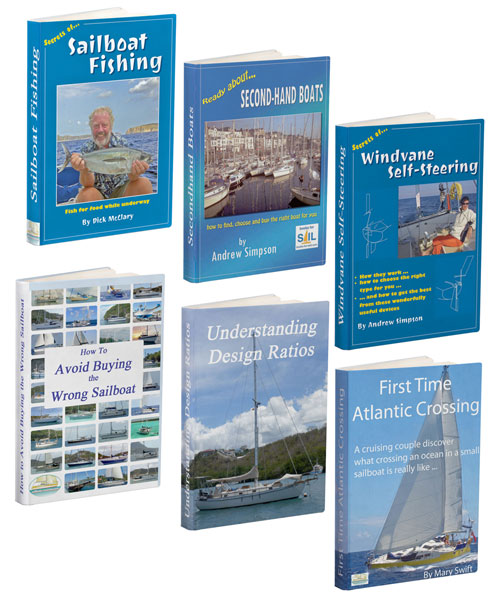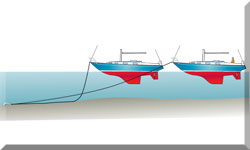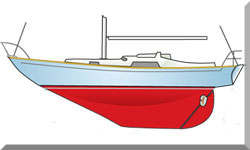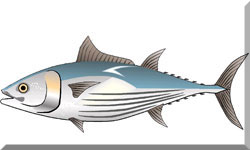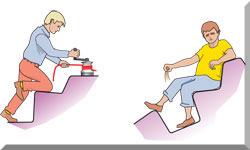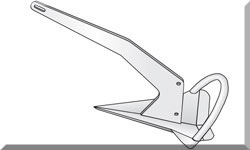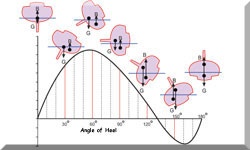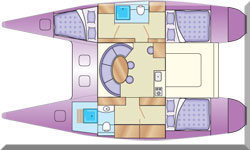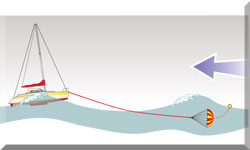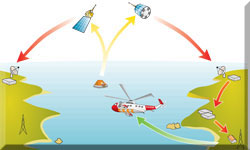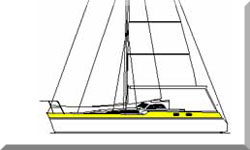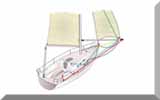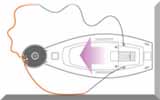- Home
- Cruising Yachts 30' to 35'
- Allied Seawind II
The Allied Seawind II Sailboat
(aka Seawind 32)
Specs & Key Performance Indicators
The Allied Seawind II, an ultra-heavy displacement cutter, was designed by Thomas Gillmer and built in the USA by the Allied Boat Company. Sloop and staysail ketch versions were also available.
Published Specification for the Allied Seawind II
Underwater Profile: Long keel
Hull Material: GRP (Fibreglass)
Length Overall: 31'7" (9.6m)
Waterline Length: 25'6" (7.8m)
Beam: 10'5" (3.2m)
Draft: 4'6" (1.4m)
Rig Type: Cutter
Displacement: 14,900lb (6,759kg)
Designer: Thomas Gillmer
Builder: The Allied Boat Company (USA)
Year First Built: 1975
Year Last Built: 1982
Number Built: 11
Published Design Ratios for the Allied Seawind II
1. Sail Area/Displacement Ratio: 13.6
- Less than 16 would be considered under-powered;
- 16 to 20 would indicate reasonably good performance;
- Over 20 suggests relatively high performance.
2. Ballast/Displacement Ratio: 38.9
- Under 40: less stiff, less powerful
- Over 40: stiffer, more powerful
3. Displacement/Length Ratio: 401
- Under 100: Ultralight
- 100 to 200: Light
- 200 to 275: Moderate
- 275 to 350: Heavy
- Over 350: Ultraheavy
4. Comfort Ratio: 37.2
- Under 20 indicates a lightweight racing boat
- 20 to 30 indicates a coastal cruiser
- 30 to 40 indicates a moderate offshore cruising boat
- 40 to 50 indicates a heavy offshore boat
- Over 50 indicates an extremely heavy offshore boat
5. Capsize Screening Formula: 1.7
- Under 2.0 (the lower the better): Better suited for ocean passages
- Over 2.0: Less suited for ocean passages
Read more about these Key Performance Indicators...
Summary Analysis of the Design Ratios for the Allied Seawind II
1. A Sail Area/Displacement Ratio of just 13.6 suggests that the Allied Seawind II will need a stiff breeze to get her going. In light conditions, unless you've got plenty of time on your hands, motor-sailing may be the way to go.
2. A Ballast/Displacement Ratio of 38.9 means that a long-keel sailboat like the Allied Seawind II is likely to benefit from being reefed early to keep her sailing upright in a moderate breeze.
3. A Displacement/Length Ratio of 401, tells us the Allied Seawind II is firmly in the ultra-heavy displacement category. Load her up as much as you like and her performance will be hardly affected, not that it was ever startling. Few if any sailboats are built to this displacement category these days - but they remain popular with some long-distance sailors.
4. Ted Brewer's Comfort Ratio of 37.2 suggests that crew comfort of a Allied Seawind II in a seaway is similar to what you would associate with the motion of a moderate bluewater cruising boat - a predictable and acceptable motion for most seasoned sailors.
5. The Capsize Screening Formula (CSF) of 1.7 indicates that a Allied Seawind II would be a safer choice of sailboat for an ocean passage than one with a CSF of more than 2.0.
Cruisers Questions
What is a staysail ketch?
What is a staysail ketch?
A staysail ketch is a type of sailboat that has two masts: a mainmast and a mizzenmast. The mizzenmast on a ketch is located forward of the rudder-post, which distinguishes it from a yawl. A staysail ketch also has a staysail, which is mounted on the inner forestay and creates a slot between the headsail and the mainsail to provide extra lift. This makes it a cutter-rigged ketch.
Some advantages of a staysail ketch are that it has smaller sails that are easier to handle for short-handed or older sailors, it has more sail plan options for different wind conditions, and it can sail well without the mainsail by using the foresail and the mizzen sail.
What are the benefits of a cutter rig over a sloop rig?
What are the benefits of a cutter rig over a sloop rig?
A cutter rig and a sloop rig are two types of sail rigs that have one mast and a fore-and-aft sail configuration. The main difference between them is the number and position of the headsails. A cutter rig has two headsails (a yankee and a staysail) that are attached to two forestays (a jibstay and a forestay), while a sloop rig has one headsail (a genoa or a jib) that is attached to one forestay.
Some of the benefits of a cutter rig over a sloop rig are:
- A cutter rig breaks down the sail area into smaller, easier to manage sails. This reduces the loads on the winches, sheets, and attachment points, and makes it easier to reef or change sails in strong winds.
- A cutter rig offers more flexibility and versatility in different wind conditions. You can use different combinations of sails to suit your needs, such as using only the staysail and reefed mainsail in heavy weather, or using both headsails and full mainsail in light winds.
- A cutter rig improves the balance and performance of the boat. Having two headsails helps to counteract the weather helm caused by the mainsail, and reduces the need for excessive rudder angle. A cutter rig also allows for a larger foretriangle, which gives more drive and power to the boat.
However, a cutter rig also has some drawbacks compared to a sloop rig, such as:
- A cutter rig costs more than a sloop rig. You need more hardware, sails, and furlers to set up a cutter rig, which adds to the initial expense and maintenance.
- A cutter rig can be more complicated to sail than a sloop rig. You need to trim two headsails instead of one, and deal with more lines and sheets on deck. Tacking a cutter rig can be harder than tacking a sloop rig, especially if you have a large yankee that has to pass through the narrow slot between the stays.
- A cutter rig can interfere with the interior layout of the boat. The inner forestay may require additional reinforcement and support under the deck, which can reduce the space or compromise the design of the cabin.
Other sailboats in the Allied range include:
Recent Articles
-
Hans Christian 43: Classic Bluewater Cruiser & Liveaboard Sailboat
Dec 10, 25 04:37 AM
Explore the Hans Christian 43: a legendary heavy-displacement, long-keel sailboat. Read our in-depth review of its specs, design ratios, and suitability for offshore cruising and living aboard. -
Planning Your Sailboat Liveaboard Lifestyle: An Ocean Sailor's Guide
Dec 06, 25 05:18 AM
Seasoned sailors share their methodical risk analysis for planning a secure Sailboat Liveaboard Lifestyle, covering financial, property, and relationship risks. -
Marine Cabin Heaters: The Expert’s Guide to Comfort & Safety at Sea
Dec 05, 25 06:52 AM
Choose the best Marine Cabin Heaters for your vessel. Expert advice on diesel, paraffin, and hot water systems for year-round cruising comfort.
